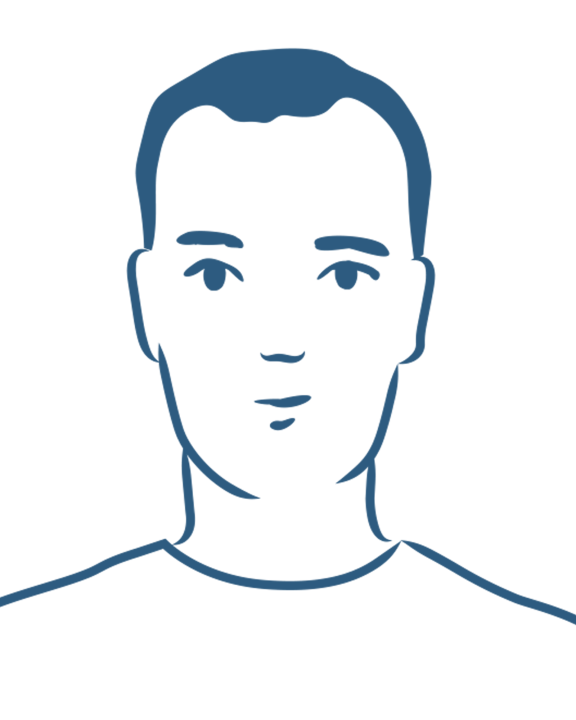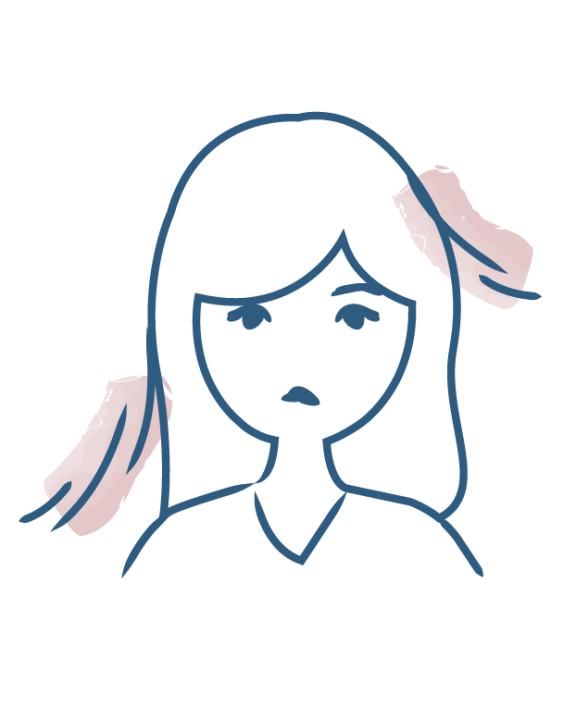What is hair loss?
Androgenetic alopecia in women and men
- The causes of hair loss
- Hair loss and fatigue
- Hair loss and the pill
- Secondary syphilis and hair loss
- What is traction alopecia?
- Drug-induced hair loss
- Hair loss and genetics
- Hair loss and hormones
- Hair loss and menopause
- Hair loss due to stress: reactional hair loss
- Pregnancy and hair loss: everything you need to know
- Scarring alopecia
- Spot baldness and hair loss
- Hair loss and Covid
- Hair loss due to ringworm of the scalp
- Hair loss: the impact of iron, zinc, vitamin D, C and B12 deficiencies

Androgenetic alopecia in women and men
Androgenetic alopecia is a form of hair loss whose origin is very different from so-called reactional hair loss. It therefore requires adapted and specific treatment.
Androgenetic alopecia in women and men: causes and differences
Androgenetic alopecia is a chronic and progressive type of hair loss that sets in with age. It is characterized by episodes of hair loss leading to miniaturization of the hair. This leads to a decrease in hair density, which can go right up to baldness, i.e., absence of hair. Androgenetic alopecia mainly affects men: 70% to 80% of men are affected during their lifetime, compared to 29% to 42% of women*. It generally begins between the ages of 30 and 40 in men, but can sometimes affect younger men, as early as puberty.
But what are the causes of androgenetic alopecia? Androgenetic hair loss is mainly of hormonal origin, involving the androgenic hormone receptors present in the hair follicles at the root of the hair. These receptors are stimulated in particular by testosterone. Their stimulation leads to a shortening of the hair growth phase (anagen phase): the hair no longer has the time to grow properly, the cycles follow one another and then eventually run out. The hair then becomes increasingly thin and short. We refer to this as the phenomenon of hair miniaturization, to the point of the appearance of light down that no longer covers the scalp and that eventually disappears for good.
Hormonal disturbances that occur at the time of menopause in women and andropause in men can accentuate the phenomenon and intensify hair loss.
Androgenetic alopecia: what are the symptoms?
Androgenetic alopecia in men is characterized by a loss of hair density on distinctive areas of the scalp: mainly the top of the head, with balding at the back of the head and on the forehead (appearance of a "V" shape). The hair around the skull is preserved (forming a crown).
The symptoms of female androgenetic alopecia also appear on the top of the head but in a more diffuse way. There is also a gradual decrease in hair density that allows the scalp to be seen. Women report that there is a "widening" of the central parting. This hair loss can also be localized at the temples.
This should not be confused with the symptoms of spot baldness, which is hair loss in patches.
Androgenetic alopecia: treatment and solutions
Despite its strong hereditary background, alopecia does not appear overnight. The phenomenon is slow and takes years to establish itself on the scalp. Unfortunately, it is an irreversible type of hair loss. It is therefore not possible to stop it, but solutions exist to slow it down:
- Medicinal treatments such as minoxidil (lotion for men and women) or finasteride with anti-androgenic action (oral, but only for men).
- Hair transplantation or grafting is another therapeutic alternative. The technique used and the results depend on the number of hairs to be transplanted, the quality of the hair and the characteristics of the transplanted area.
- Cosmetic products to be applied to the scalp (e.g., shampoo and anti-hair loss lotion), as well as vitamin and mineral-based food supplements, can be used in combination with androgenetic alopecia treatments or as an adjunct to them.
* Source: (Blume-Peytavi et al., 2011; Norwood, 1975)
More information
- Discover Chronic loss of hair density
What is hair loss?
Chronic loss of hair density
- Discover Everything you need to know about seasonal hair loss
What is hair loss?
Everything you need to know about seasonal hair loss
- Discover Localized hair loss
What is hair loss?
Localized hair loss
- Discover The hair's life cycle
What is hair loss?
The hair's life cycle
- Discover Hair loss in men
What is hair loss?
Hair loss in men
- Discover Diffuse hair loss
What is hair loss?
Diffuse hair loss
- Discover Hair loss in women
What is hair loss?
Hair loss in women
Our care routines
Loss of hair density
- Discover MY ROUTINE AGAINST CHRONIC HAIR DENSITY LOSS IN MEN (OVER 6 MONTHS)
MY ROUTINE AGAINST CHRONIC HAIR DENSITY LOSS IN MEN (OVER 6 MONTHS)
Are you losing your hair?
- Discover Anti-reactional loss of hair volume for post-pregnancy and breastfeeding women
Anti-reactional loss of hair volume for post-pregnancy and breastfeeding women
Like many young mothers, you are experiencing some discomfort following your pregnancy?
- Discover MY OCCASIONAL HAIR DENSITY LOSS ROUTINE FOR WOMEN (LESS THAN 6 MONTHS)
MY OCCASIONAL HAIR DENSITY LOSS ROUTINE FOR WOMEN (LESS THAN 6 MONTHS)
Are you losing your hair?
- Discover MY OCCASIONAL HAIR DENSITY LOSS ROUTINE FOR MEN (LESS THAN 6 MONTHS)
MY OCCASIONAL HAIR DENSITY LOSS ROUTINE FOR MEN (LESS THAN 6 MONTHS)
Are you experiencing loss of hair density?
Dermatological expertise
To better understand your skin and hair, discover our exclusive content and innovative care products designed to improve your quality of life..


